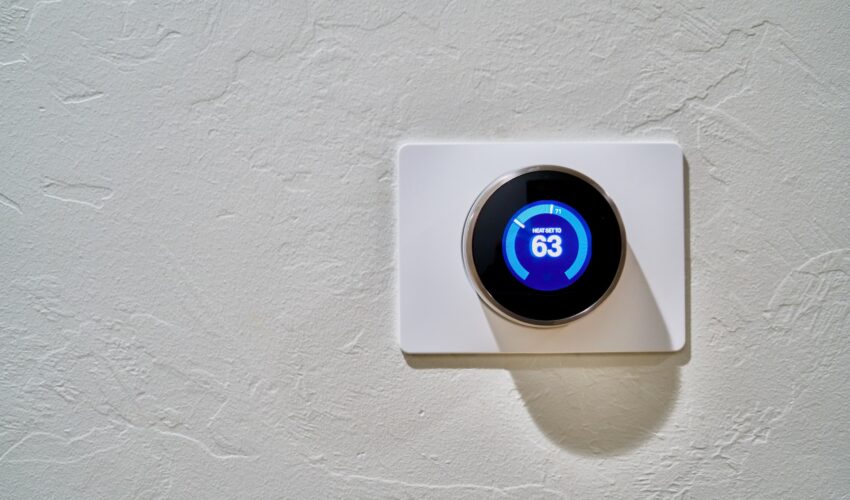The thermostat is perhaps the most overlooked component of your home’s HVAC system—but without a properly working thermostat, your HVAC system won’t know when to heat or cool the air in your home. Even if your thermostat is functioning normally, if it’s placed in a poor spot in your home, it may not be working to its full potential. Below, we explain how proper thermostat placement can affect your home and detail some of the best locations to place your thermostat—as well as a few to avoid.
Why Your Thermostat’s Location Matters
Your thermostat senses the temperature of the room it’s in and controls when your home’s HVAC system turns on and off. This means that if your thermostat is in an unusually warm or cold part of your home, it won’t read an accurate temperature—and these inaccurate readings can lead to increased energy consumption, higher electric bills, uncomfortable temperatures, and increased wear and tear on your HVAC system.
Ideal Locations For Your Thermostat
Your thermostat should be as centrally located as possible. If you have a two-story home, this means installing the thermostat somewhere in the center of the main floor. Your thermostat should be on an interior wall—this will ensure that it’s accurately measuring the temperature inside your home.
There’s an old idea that the thermostat should be by the return intake; however, this isn’t the best advice. While keeping it near the return will accurately read the temperature of the air returning to your air handler, placing your thermostat too close to the intake grille can cause too much air to move across the sensor and skew the reading.
Your thermostat should be somewhere that’s easy to access, keeping in mind that the temperature in your house will always be ideal wherever the thermostat is located. Placing your thermostat four to five feet above the ground will also ensure that it’s reading the average temperature in the room; since heat rises, putting your thermostat too low or high could skew the temperature by a few degrees.
Places to Avoid
Generally, you should avoid putting your thermostat near:
- Supply registers
- Windows
- Doors
- Exterior walls
- Direct sunlight
- Your kitchen
From cold air leaking around a window to hot air wafting out of an oven, these places can impact the temperature your thermostat will detect—which means they can also cause your HVAC system to work harder than it needs to and result in erratic temperatures in your home.
For example, if your thermostat is in direct sunlight, it may tell your HVAC unit that your home is five to 10 degrees warmer than it is, forcing your A/C to kick on even in mild weather. If your thermostat is in a dark, drafty corner or right by a supply register, it may be signaling that your home is much colder than it actually is, keeping your A/C from running at all.
How Smart Thermostats Can Help
“Smart” thermostats are wifi-enabled, allowing them to be controlled from any device with a wireless connection. Having a smart thermostat can reduce your energy bills by making your home’s energy consumption more efficient—but even a smart thermostat should be placed in an appropriate location within your home.
Smart thermostats also come with remote sensors that can be put in different rooms, which is particularly great for two-story homes. These sensors allow the thermostat to do two things:
- It can sense where people are and focus on making that area the set temperature.
- If all areas of the home are occupied, the thermostat can perform “temperature averaging” to ensure that the entire house is close to the set temperature.
Conclusion
If you’re wondering whether your thermostat is in the best location, or are interested in upgrading to a smart thermostat, look no further than North East Air Conditioning, Heating & Plumbing. Our experienced technicians can assess your energy usage and ensure that your thermostat is in the most efficient location for your home. Give us a call at (210) 658-0111 or visit our website to schedule an appointment.
Photo by Dan LeFebvre on Unsplash


